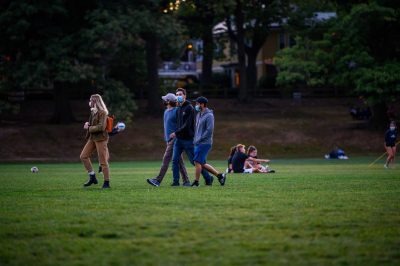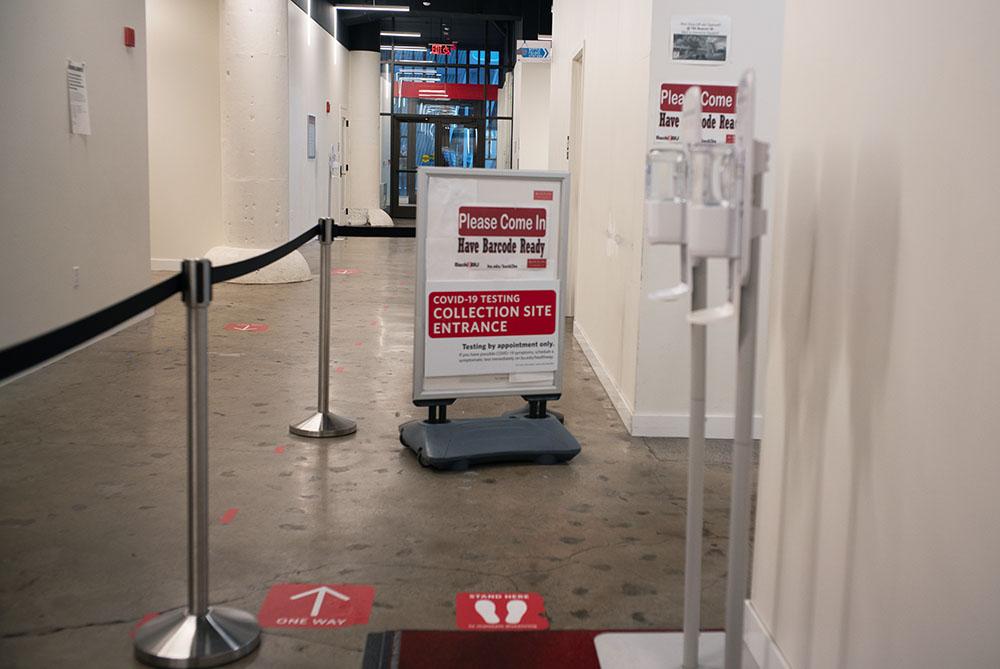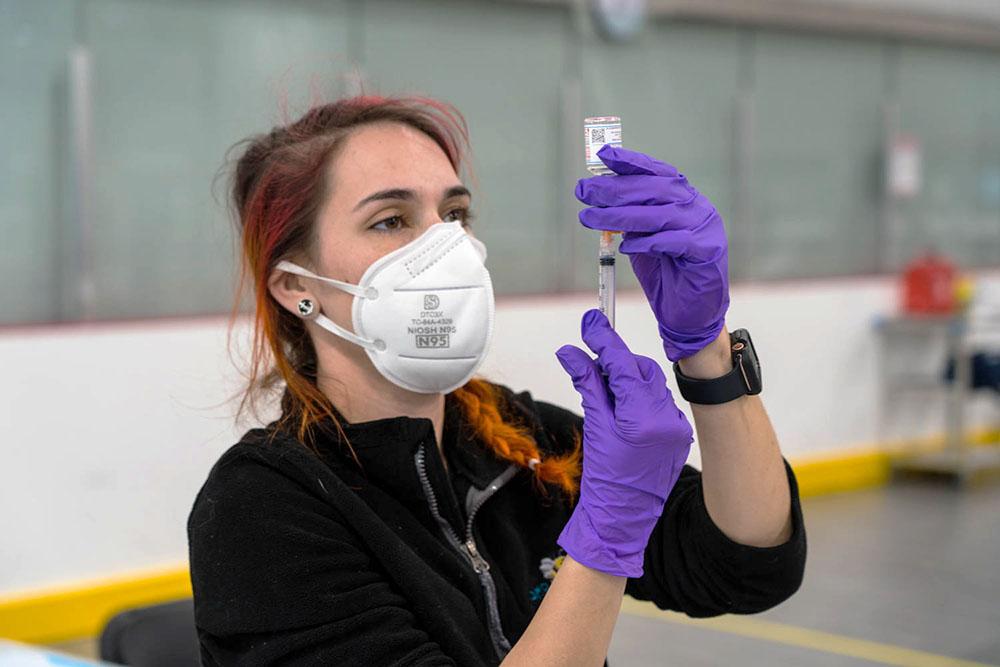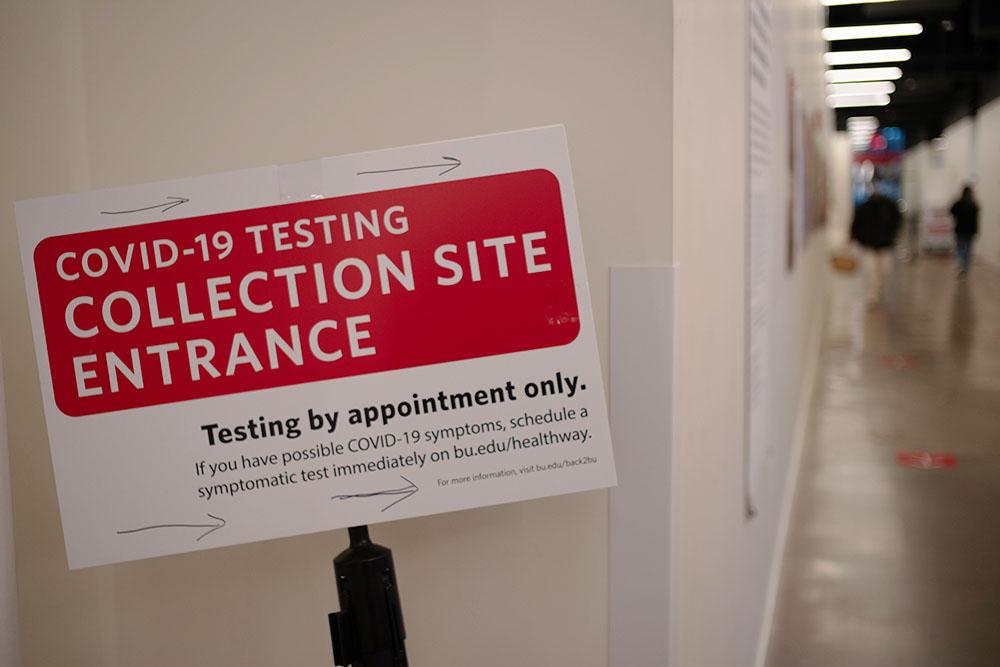Local officials are urging young people to follow coronavirus precautions as Boston sees an uptick in COVID-19 cases.

After Boston entered the COVID-19 red zone Wednesday, Mayor Marty Walsh said in a press conference Friday that younger adults have contributed the most coronavirus cases to the city.
“This isn’t about blaming you,” Walsh said. “We need every single person in every single neighborhood to follow the guidelines that we have laid out. They really do work.”
Communities in the red zone have a daily case rate of more than eight per 100,000 people.
Ingrid Katz, associate faculty director at the Harvard Global Health Institute, said college students arriving in Boston from around the world have contributed to the increase.
“Anytime you’re going to see an influx of a large number of people, you always run the risk of increased cases,” Katz said. “It’s a sheer numbers game.”
It’s challenging to compare the rates of COVID-19 between college students and young people who don’t attend college, Katz said, since college students are tested more frequently.
“No one is testing twice a week unless their employer has required it,” Katz said. “It’s a little hard to tease out, in this circumstance, the role that people who may be in this age range are playing as compared to people who are at a university.”
Katz said many health professionals are concerned about a second wave when the weather gets colder and more people begin to socialize indoors.
Colleges and universities should prepare to close if coronavirus rates in the community get too high, Katz said.
Officials should focus on educating people on how to stay safe, she added, rather than blame them for incorrect behaviors.
“I really want all of us, particularly in public health and medicine, to get away from the blaming aspect of this,” Katz said, “and ensure that we really are sending universal messages about safe measures and that we have systems in place to not punish people, but to ensure that people can make good and wise decisions.”
Thomas Stopka, a public health and community medicine professor at Tufts University, said people in party environments may be less likely to wear masks and practice social distancing.
“If people are partying, people are drinking, they may be less cognizant of the distance between themselves and others,” Stopka said. “They might be letting down their guard a little bit more.”
Colleges and universities quarantining students infected with the virus on campus rather than sending them home can help prevent spread to the outside community, Stopka said.
“Some colleges and universities in Boston are doing an exceptional job in terms of testing and, if students test positive, to keep them on campus,” Stopka said. “They’re not forced to get on a bus, train, airplane to go back home, which would certainly increase the risk for transmission to the larger community.”
However, he said higher education institutes cannot completely separate themselves from the community.
“Students on college and high school and university campuses don’t live in a bubble, not like the NBA,” Stopka said. “There’s no concrete wall that separates students from the surrounding communities. There certainly could be intermingling.”
Stopka said Boston and Massachusetts officials’ willingness to institute COVID-19 restrictions has helped to contain the virus.
“In other parts of the country,” he said, “we’ve seen local government, we’ve seen state governments, state governors, not have as much concern about the virus and not aim to put policies in place that would reduce the risks.”
Although many students have easy access to testing, Stopka said this is not the case for the outside community.
“It’s important to emphasize the need for equitable testing across communities,” Stopka said. “It’s unfortunate that some surrounding communities that might be at high risk may have been in the red zone for the last several weeks, may have had more challenges in getting testing.”

























































































































Elizabeth Lindsay • Oct 5, 2020 at 10:00 pm
College students and other millennials are not social distancing in Boston. This is a real problem and will only make things worse with the flu season approaching coupled with Covid-19.